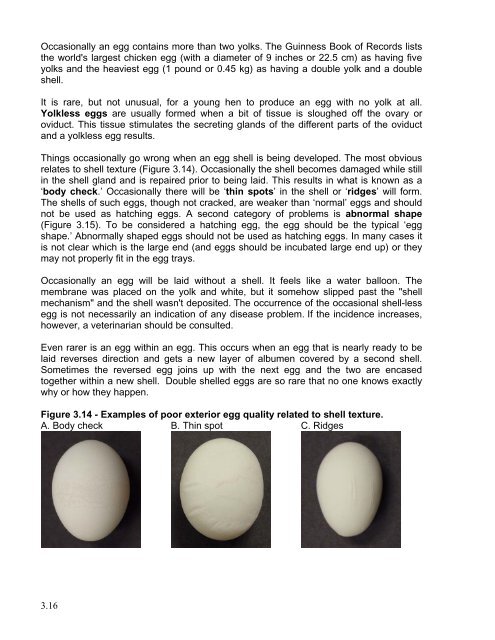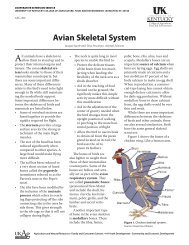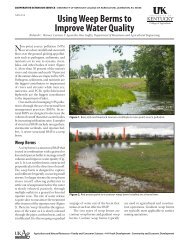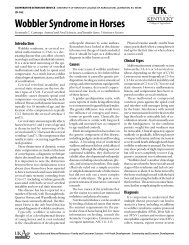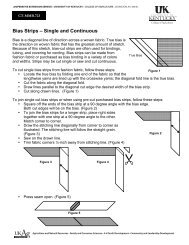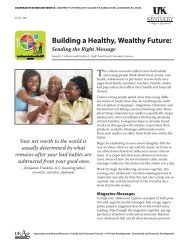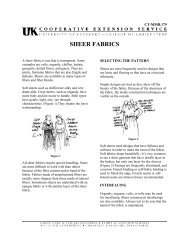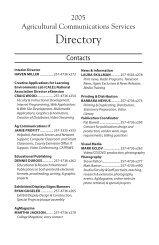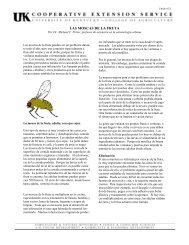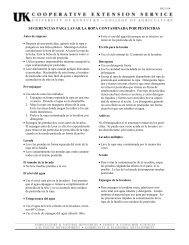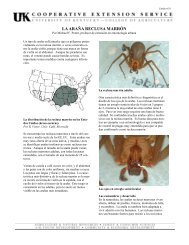Chapter 3 - CHICKEN ANATOMY AND PHYSIOLOGY
Chapter 3 - CHICKEN ANATOMY AND PHYSIOLOGY
Chapter 3 - CHICKEN ANATOMY AND PHYSIOLOGY
Create successful ePaper yourself
Turn your PDF publications into a flip-book with our unique Google optimized e-Paper software.
Occasionally an egg contains more than two yolks. The Guinness Book of Records lists<br />
the world's largest chicken egg (with a diameter of 9 inches or 22.5 cm) as having five<br />
yolks and the heaviest egg (1 pound or 0.45 kg) as having a double yolk and a double<br />
shell.<br />
It is rare, but not unusual, for a young hen to produce an egg with no yolk at all.<br />
Yolkless eggs are usually formed when a bit of tissue is sloughed off the ovary or<br />
oviduct. This tissue stimulates the secreting glands of the different parts of the oviduct<br />
and a yolkless egg results.<br />
Things occasionally go wrong when an egg shell is being developed. The most obvious<br />
relates to shell texture (Figure 3.14). Occasionally the shell becomes damaged while still<br />
in the shell gland and is repaired prior to being laid. This results in what is known as a<br />
‘body check.’ Occasionally there will be ‘thin spots’ in the shell or ‘ridges’ will form.<br />
The shells of such eggs, though not cracked, are weaker than ‘normal’ eggs and should<br />
not be used as hatching eggs. A second category of problems is abnormal shape<br />
(Figure 3.15). To be considered a hatching egg, the egg should be the typical ‘egg<br />
shape.’ Abnormally shaped eggs should not be used as hatching eggs. In many cases it<br />
is not clear which is the large end (and eggs should be incubated large end up) or they<br />
may not properly fit in the egg trays.<br />
Occasionally an egg will be laid without a shell. It feels like a water balloon. The<br />
membrane was placed on the yolk and white, but it somehow slipped past the "shell<br />
mechanism" and the shell wasn't deposited. The occurrence of the occasional shell-less<br />
egg is not necessarily an indication of any disease problem. If the incidence increases,<br />
however, a veterinarian should be consulted.<br />
Even rarer is an egg within an egg. This occurs when an egg that is nearly ready to be<br />
laid reverses direction and gets a new layer of albumen covered by a second shell.<br />
Sometimes the reversed egg joins up with the next egg and the two are encased<br />
together within a new shell. Double shelled eggs are so rare that no one knows exactly<br />
why or how they happen.<br />
Figure 3.14 - Examples of poor exterior egg quality related to shell texture.<br />
A. Body check<br />
B. Thin spot<br />
C. Ridges<br />
3.16


